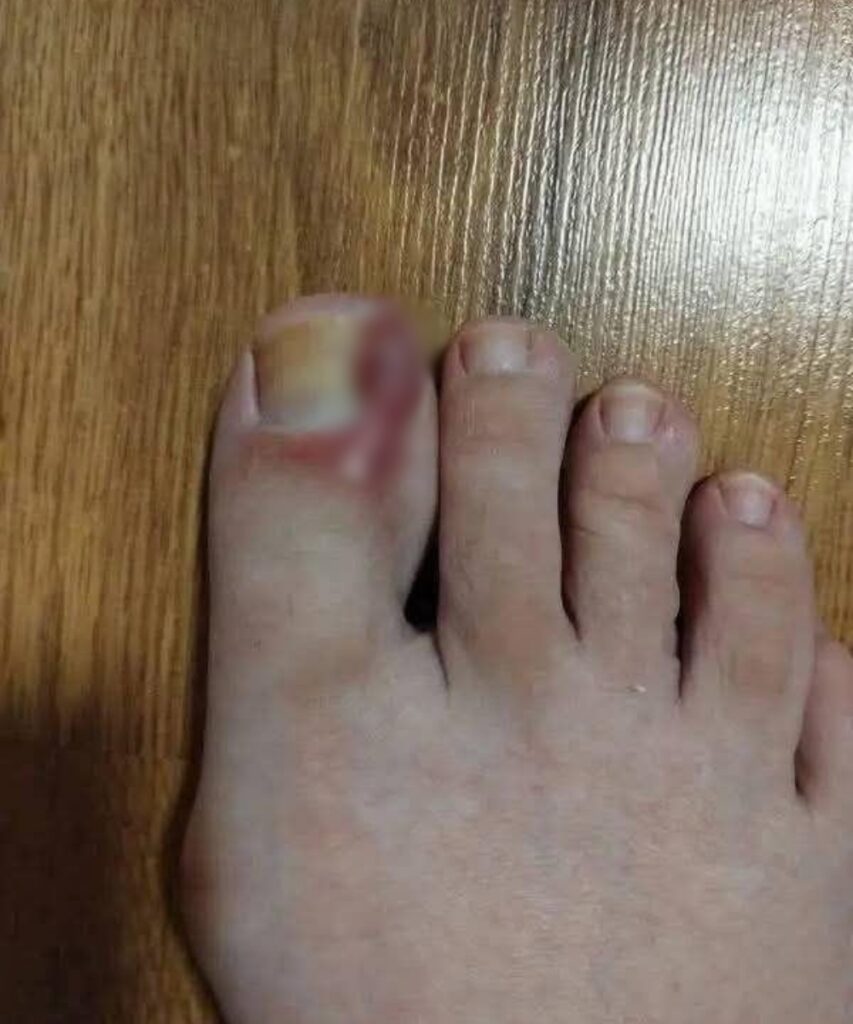
An ingrown toenail may be small in size, but it can cause big discomfort. It happens when the edge of a toenail grows into the surrounding skin, often leading to redness, swelling, tenderness, and sometimes infection. While severe cases require medical attention, mild ingrown toenails can often be safely treated at home with the right care.
Recognizing the Early Signs
Before treatment, it’s important to identify the symptoms:
Redness and swelling around the nail edge
Tenderness or pain when pressure is applied
Warmth in the affected area
Possible fluid buildup if infection is starting
Step-by-Step Home Treatment
Step-by-Step Home Treatment
1. Soak Your Foot in Warm Water
Fill a basin with warm water and add a handful of Epsom salt to help reduce swelling and soften the skin.
Soak the affected foot for 15–20 minutes, 2–3 times a day.
This makes it easier to work with the nail and relieves soreness.
2. Gently Lift the Nail
After soaking, use a clean cotton ball or dental floss to gently lift the edge of the ingrown nail.
Slip a tiny piece of clean cotton or gauze under the nail to encourage it to grow above the skin instead of into it.
Replace the cotton daily to keep it clean.
3. Apply an Antibacterial Ointment
Use an over-the-counter antibiotic cream or ointment to prevent infection.
Cover the toe with a sterile bandage, especially if you’ll be wearing shoes.
4. Choose Proper Footwear
Wear open-toed shoes or loose-fitting footwear while healing.
Avoid high heels or tight shoes that press against the toes.
5. Manage Pain and Inflammation
Take over-the-counter pain relievers like ibuprofen or acetaminophen as needed.
Continue soaking and changing dressings daily until the nail starts to grow normally.
When to See a Doctor
Even with good home care, some ingrown toenails require professional treatment. Seek medical attention if you notice:
Severe or worsening pain
Pus or spreading redness
Signs of infection (fever, chills, swelling that extends beyond the toe)
You have diabetes, poor circulation, or a weakened immune system
Preventing Future Ingrown Toenails
Trim nails correctly: Cut toenails straight across, avoiding rounded edges.
Don’t cut nails too short: Leave them slightly above the skin level.
Wear well-fitting shoes: Toes need room to move without pressure.
Keep feet clean and dry: Moisture can increase the risk of nail problems.
The Bottom Line
An ingrown toenail can be a painful nuisance, but with gentle care, patience, and proper hygiene, most mild cases can be resolved at home. The key is to act early, treat the toe kindly, and take steps to prevent future trouble.